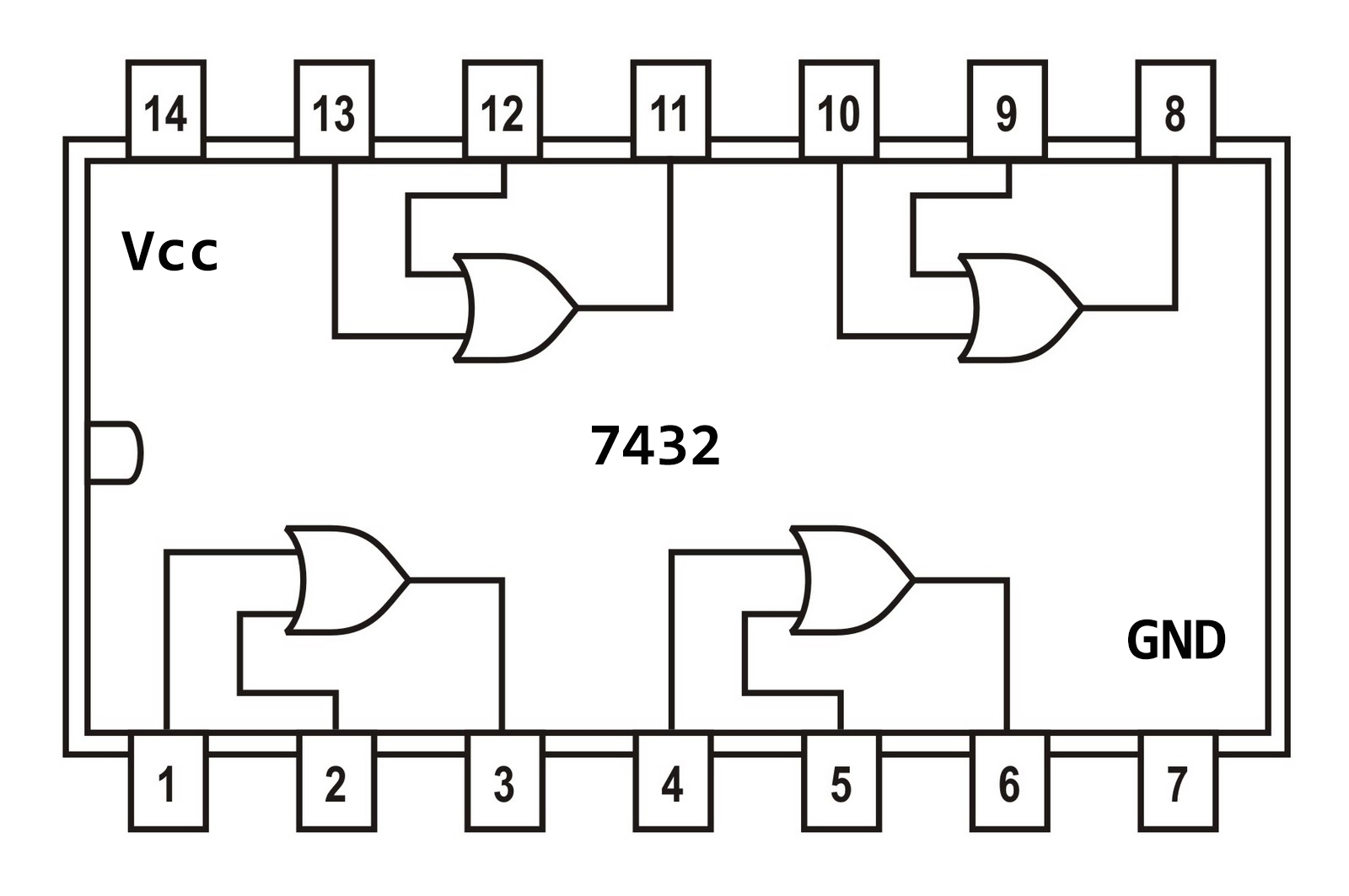Understanding TTL Modelo - Your Guide To Digital Signals
Have you ever wondered about the unseen forces making your digital world tick? Perhaps you've come across the term "TTL Modelo" and felt a little puzzled. It sounds quite technical, does it not? Yet, this concept, in its various forms, plays a rather important role in how information travels across networks and how your electronic gadgets communicate with one another. It's a fundamental piece of the puzzle that keeps things running smoothly, whether you're browsing the web or connecting a tiny sensor.
You see, the phrase "TTL Modelo" actually refers to a couple of distinct but equally vital ideas in technology. On one hand, it describes a sort of built-in timer for data packages as they move across the internet, making sure they don't get lost in an endless loop. On the other, it points to a specific way electronic signals talk to each other, a kind of language for circuits. It's truly fascinating how one small acronym can cover so much ground, is that not so?
So, we're going to pull back the curtain on "TTL Modelo" and look at what it really means for you and your everyday tech. We'll explore how it helps your internet connection stay clear and how it allows different parts of your electronics to connect and share information. You might be surprised by how much this seemingly small detail contributes to the big picture of our connected lives, you know.
Table of Contents
- What is TTL Modelo Anyway?
- How Does TTL Modelo Prevent Network Loops?
- Why Do We Talk About TTL Modelo in Electronics?
- Is All 5V Logic Considered TTL Modelo?
What is TTL Modelo Anyway?
When folks talk about "TTL Modelo," they're often referring to one of two quite different things, which can be a little confusing, right? One meaning has to do with how long a piece of information lives as it travels through the internet, and the other relates to the specific way electronic parts communicate with each other. It's almost like having two friends with the same first name, but they're from different families, in a way. Both are important, but they do very different jobs.
The Time-to-Live Aspect of TTL Modelo
Let's consider the "Time To Live" part of "TTL Modelo" first. Imagine sending a letter through a very busy postal system. This "TTL" is like a little counter on your letter. Every time your letter passes through a major sorting office, that counter goes down by one. If the counter ever hits zero before your letter gets to its destination, the letter is simply thrown away. This is a pretty clever trick, because it stops letters from going around in circles forever if they get lost or misdirected. It's a way to keep the whole system from getting clogged up with lost mail, you know. For instance, a data packet's survival period, which goes down by one each time it passes through a device that handles network routing, like a network switch, is what this refers to. When this count reaches zero, the packet is discarded, and the main reason for this is to keep things from looping endlessly.
The Logic Level Side of TTL Modelo
Now, the other "TTL Modelo" is about how electronic signals work. This refers to a type of electronic circuit called "Transistor-Transistor Logic," or it can describe a standard for electrical signal levels. Think of it like a specific language that electronic parts use to talk. For example, in this system, a signal of zero volts typically means "off" or "0," and a signal of about five volts means "on" or "1." This is a very common way for devices that computers control to communicate internally. So, if you hear someone mention "USB to TTL Modelo," they're probably talking about a device that helps your computer speak this particular electronic language to other small gadgets, which is pretty neat.
How Does TTL Modelo Prevent Network Loops?
It's a good question, how does that "Time To Live" aspect of "TTL Modelo" actually stop network circles? Well, when a data packet leaves your computer, it gets a starting "TTL" number. For many Windows computers, this number is often 128. As this little data package travels across the internet, hopping from one network device to another, that number goes down by one at each hop. It's a bit like a digital countdown. If the packet gets stuck in a loop, going over the same path repeatedly, its "TTL Modelo" count will eventually reach zero. When that happens, the device that sees the zero count simply gets rid of the packet, which is very helpful.
Packet Journeys and TTL Modelo Values
Let's say a data packet starts its trip with a "TTL Modelo" value of 128. If that packet finally arrives at its destination, and you see its remaining "TTL Modelo" value is, say, 28, then you know it went through 100 different network stops to get there. This gives you a bit of insight into the path the data took. The whole idea is to make sure that if a packet somehow gets lost or misdirected and starts bouncing around endlessly between network devices, it won't just keep going forever and ever. It has a limited lifespan, and when that time runs out, it's gone. This keeps the network from getting jammed up with lost information, which is something we definitely want to avoid.
Why Do We Talk About TTL Modelo in Electronics?
Beyond the network side of things, "TTL Modelo" is also a very common term in the world of electronics. It specifically refers to a certain kind of electrical signal that many digital circuits use. When you have devices that need to send information back and forth using simple "on" or "off" signals, this "TTL Modelo" standard is often the chosen way to do it. It's a widely accepted method for electronic parts to communicate clearly, which is why it comes up so much. You might hear it discussed alongside other signal types, but this one is pretty fundamental, you know.
Connecting Devices with USB to TTL Modelo
One common use you might come across is a "USB to TTL Modelo" converter. Your computer's USB port uses one kind of signal, but many smaller electronic parts, like the tiny computers inside hobby projects or various sensors, use the "TTL Modelo" signal standard. So, a "USB to TTL Modelo" converter acts like a translator. It takes the signals from your computer's USB port and changes them into the "TTL Modelo" language that the other device understands, and vice versa. This makes it much easier to connect your computer to things like microcontrollers or different types of sensors to get them to share information, which is actually very useful for makers and hobbyists.
Understanding Different TTL Modelo Signal Levels
When we talk about "TTL Modelo" as a signal level, it's about specific voltages that represent "0" and "1." For a "0," the signal is typically very close to zero volts, like 0 to 0.4 volts. For a "1," the signal is usually higher, between 2.4 and 5 volts. This is a rather clear distinction for electronic parts to recognize. For example, if a "TTL Modelo" circuit is supposed to receive a "1," the incoming signal needs to be at least 2 volts. These circuits are made to make sure they put out a signal that meets these specific requirements. It's a way to ensure that the "on" and "off" messages are delivered without any confusion, which is pretty important for reliable communication.
Is All 5V Logic Considered TTL Modelo?
This is a common question, and the answer is actually "no," not all five-volt logic is truly "TTL Modelo." For a long time, if an electronic circuit used a five-volt signal, people just called it "TTL Modelo" because that was the most common type of logic circuit at that voltage. But things have changed quite a bit in electronics. Many circuits today are built using a different technology called CMOS, even if they operate at five volts. So, while they might use the same voltage, their internal workings are different, and they don't have the same exact electrical characteristics as true "TTL Modelo" circuits. It's a little bit like calling all fizzy drinks "cola," even though there are many different kinds, you know.
TTL Modelo Versus Other Logic Types
What's more, a lot of modern electronic circuits now work at even lower voltages, like 3.3 volts. These lower-voltage circuits are definitely not "TTL Modelo" because they don't operate at the five-volt standard. So, while "TTL Modelo" was once the dominant way to make digital circuits and define signal levels, the world of electronics has expanded quite a bit. There are now many different ways to achieve digital logic, and many different voltage standards. This includes things like HTL, which is a push-pull output, or PNP and NPN signal outputs, which are also used for various sensors like incremental encoders. It's a diverse landscape, and "TTL Modelo" is just one part of it, which is something to keep in mind.

TTL | about us

Ttl - JungleKey.fr Image #250

Ttl transistor diagram and gate - statezik